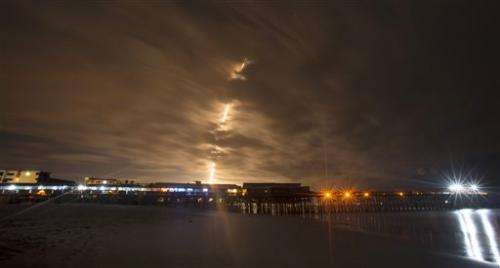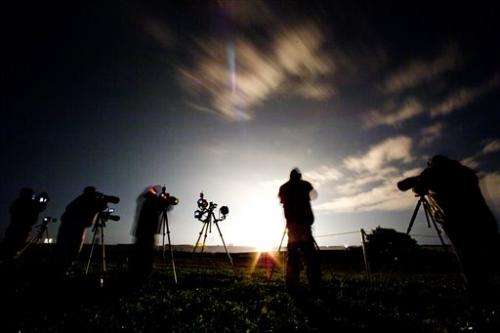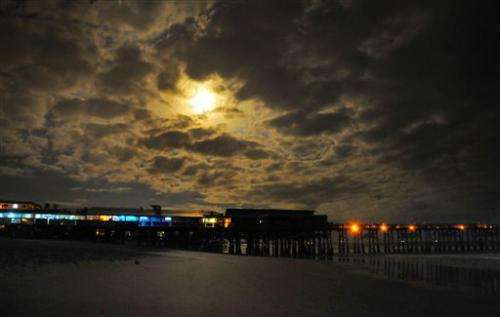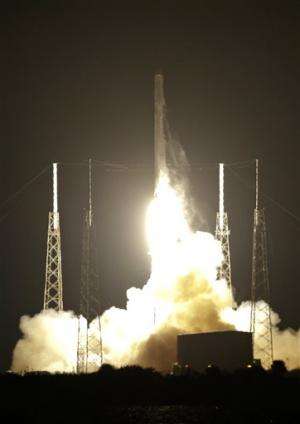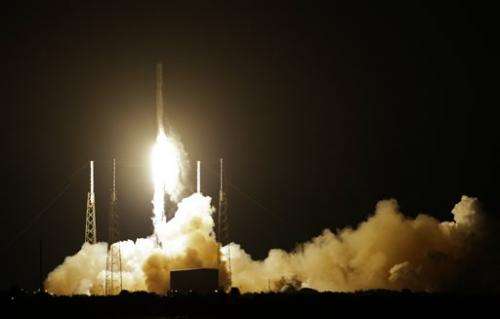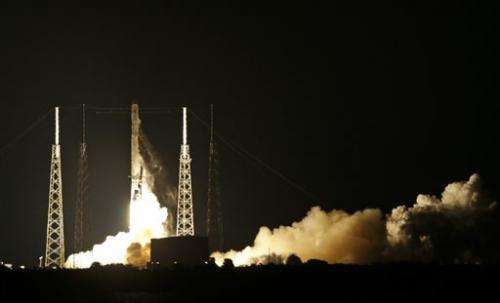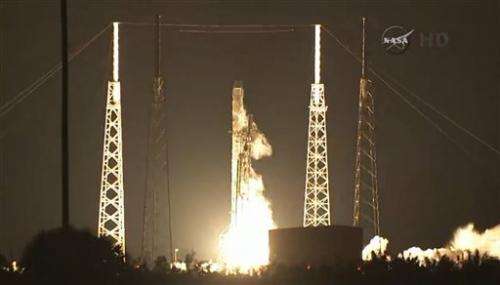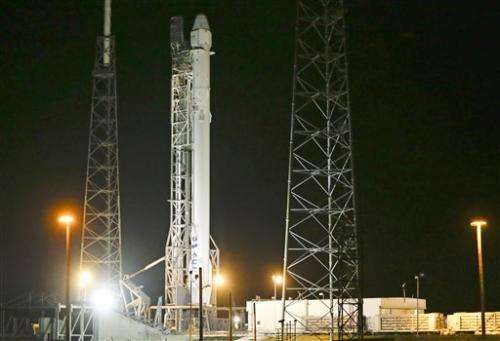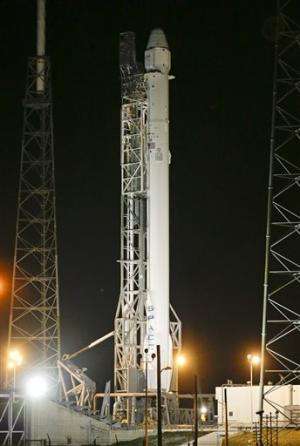SpaceX launches for NASA, no luck with rocket landing at sea
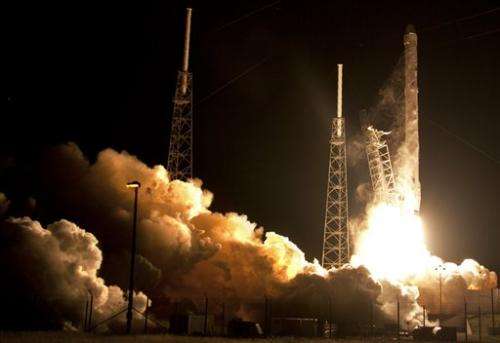
The private SpaceX company sent a supply ship soaring flawlessly toward the International Space Station on Saturday, but the booster rocket ended up in pieces in the Atlantic following a failed attempt to land on a barge.
"Close, but no cigar this time," the company's billionaire founder, Elon Musk, announced via Twitter shortly after the unprecedented touchdown effort.
Despite the high-profile flop in the dark ocean, Musk said he was encouraged. The 14-story booster managed, at least, to fly back to the floating platform from an altitude dozens of miles high.
"Rocket made it to drone spaceport ship, but landed hard," he said in a tweet. "Bodes well for the future tho."
He's already planning another landing test next month.
Musk, who also runs electric car maker Tesla Motors, maintains that recovering and reusing rockets is essential for bringing down launch costs and speeding up operations.
Until Saturday, no one had ever tried anything like this before.
The modified barge—nearly the size of a football field—was positioned a couple of hundred miles off Florida's northeastern coast. The uncrewed platform was spared serious damage from the impact, although some equipment on deck will need to be replaced, according to Musk. A recovery ship with SpaceX staff was a safe 10 miles (16 kilometers) away.
SpaceX's primary mission was delivering more than 5,000 pounds (2,268 kilograms) of station supplies ordered up by NASA, including hasty replacements for experiments and equipment lost in the destruction of another company's cargo ship last fall, as well as extra groceries. Belated Christmas presents were also on board for the six station astronauts.
"Hurrah! A #Dragon is coming to visit bringing gifts," Italian astronaut Samantha Cristoforetti said in a tweet from orbit.
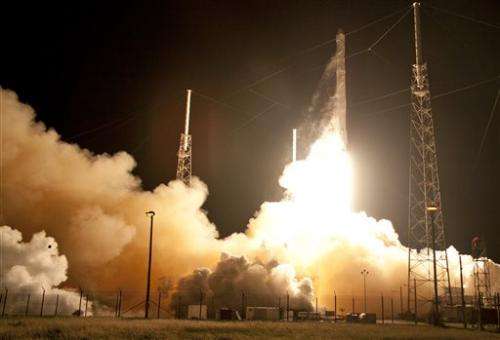
Without interfering with the $133 million delivery, Musk had fins for guidance and landing legs installed on the first stage of the unmanned Falcon rocket.
Once separated from the upper stage of the rocket, the main booster reignited as planned for the flyback. Automatic engine firings maneuvered the booster down toward the autonomous, modified barge. The Air Force maintained the ability, as always, to destroy the booster if it strayed off course.
There was no good video of the "landing/impact," Musk said, noting the "pitch dark and foggy" conditions. Brief TV images from booster cameras, broadcast by NASA, showed only water bubbles.
"Will piece it together from telemetry and ... actual pieces," said Musk, one of the co-founders of PayPal.
Later in the day, Musk said the fins on the rocket ran out of hydraulic fluid right before touchdown. Regardless, he praised his team "for making huge strides towards reusability on this mission."
"Upcoming flight already has 50% more hydraulic fluid, so should have plenty of margin for landing attempt next month," he said.
In the weeks preceding the test, Musk had estimated there was a 50-50 chance, at best, that the Falcon's first-stage booster would land vertically on the platform. A pair of attempts last year to bring boosters down vertically on the open ocean went well, but company officials conceded before Saturday's try that a platform touchdown was considerably more challenging.
The platform measures 300 feet (90 meters) by 100 feet (30 meters), with wings stretching the width to 170 feet (51 meters)—a relatively puny spaceport in the vastness of the sea.
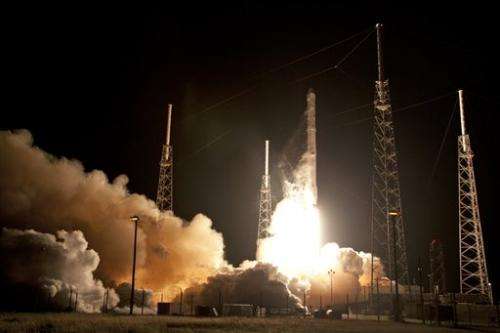
NASA watched the post-launch drama with keen interest, but its primary focus was on the Dragon racing toward the space station. The capsule is due to arrive there Monday.
The shipment—the sixth by SpaceX since 2012—is especially crucial given the recent loss of another company's supply ship.
Orbital Sciences Corp.'s Antares rocket exploded seconds after liftoff in October, destroying the entire payload and damaging the Virginia launch complex. That rocket is grounded until 2016. Orbital Sciences plans to shift some of the backlog to an Atlas rocket later this year.
This SpaceX delivery was supposed to occur before Christmas, but was delayed by a flawed test-firing of the rocket. Then a problem with the rocket's steering system cropped up at the last minute during Tuesday's initial launch attempt.
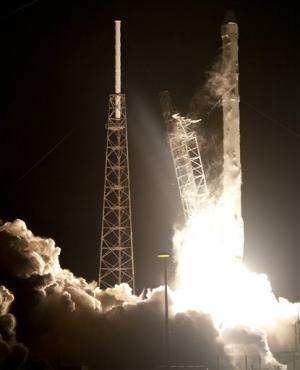
NASA is paying SpaceX and Orbital Sciences to keep the space station stocked in the wake of the retired shuttle program. The $1.6 billion contract with SpaceX calls for 12 flights; the $1.9 billion contract with Orbital calls for eight. SpaceX also returns items to Earth; Orbital cannot.
Russia and Japan will make their own supply runs this year.
SpaceX, headquartered in Hawthorne, California, also has been contracted by NASA to develop beefed-up Dragons for astronaut rides to the space station, beginning as early as 2017. Boeing also is hard at work on a manned capsule. In the meantime, NASA is paying tens of millions of dollars to Russia for each U.S. astronaut launched aboard the Soyuz spacecraft.
-
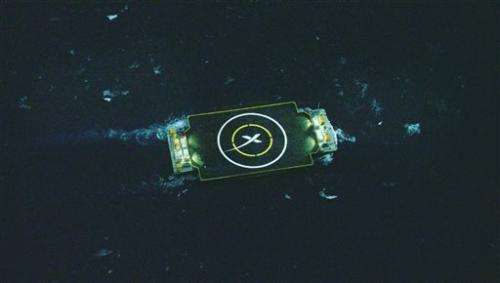
This undated image provided by SpaceX shows an ocean barge which SpaceX is planning to use during an attempt to deliver supplies to the International Space Station. The company's unmanned Falcon rocket is set to blast off before dawn Saturday, Jan. 10, 2015, from Cape Canaveral, Fla., and they hope to land the first-stage booster on the platform after launch. (AP Photo/SpaceX) -
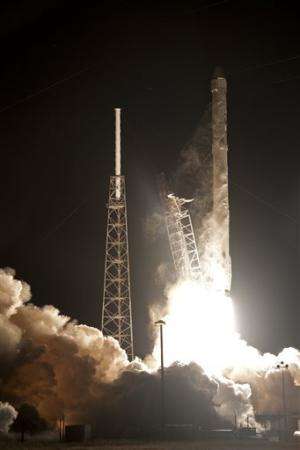
The Falcon 9 SpaceX rocket lifts off from Space Launch Complex 40 at the Cape Canaveral Air Force Station in Cape Canaveral, Fla., Saturday, Jan. 10, 2015. SpaceX is on a resupply mission to the International Space Station. (AP Photo/John Raoux)
More information: SpaceX: www.spacex.com/
© 2015 The Associated Press. All rights reserved.
